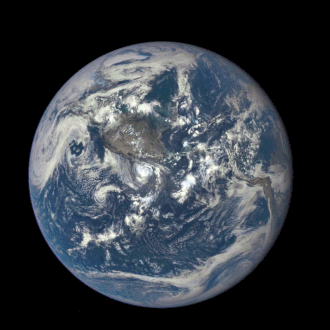The Far Side
9.2 - Understand the major differences between the appearance of the Moon’s near and far sides9.3 - Understand how information has been gathered about the Moon's far side
The Moon has a synchronous (or captured) rotation which means that from Earth only one side or hemisphere can be seen.
There is no expression in astronomy as "dark side of the Moon". The side we see is known as the near side. The side we cannot see is called the far side.
The far side has fewer maria than the near side. The crust is thicker and more cratered. It is thought that the near side has a thinner crust and has a higher amount of heat-producing elements.
We can see up to 59% of the Moon's surface because of a process called libration. Sometimes we can see a little more of the poles and sometimes a fraction more of the east and western limbs depending on the Moon's and Earth's position.
We did not know what the far side looked like until the Soviet Luna 3 probe took pictures of it in 1959. Today the only humans to have viewed it are the Apollo astronauts in orbit.
No radio interference from Earth can reach the far side and so it is a candidate for a future radio telescope on the Moon.
As well as early Russian and American probe visits in the 1950's and 60's, Lunar exploration declined after the Apollo missions. China's Chang'e 4 mission landed in a crater on the far side in 2019 and is gathering information about dust, electric field, plasma and seismometer tests. Previous Chang'e missions have mapped the surface including the far side as did India's orbiter Chandrayaan-1. NASA launched the Lunar Reconnaissance Orbiter in 2009 which, as of the time of writing, is taking detailed maps of the surface.
Interactive
Summary
- We cannot see the far side of the Moon due to its synchronous rotation.
- There is no "dark side" of the Moon. Both hemispheres receive equal amounts of sunlight.
Questions
Describe why the rotation of the Moon allows us to only see one side of it.
Links
- Lunar and Planetary Institute See Atlases of the Far Side
- Ralph Aeschliman Planetary Cartography and Graphics Detailed Atlases



 | © All Rights Reserved |
| © All Rights Reserved |